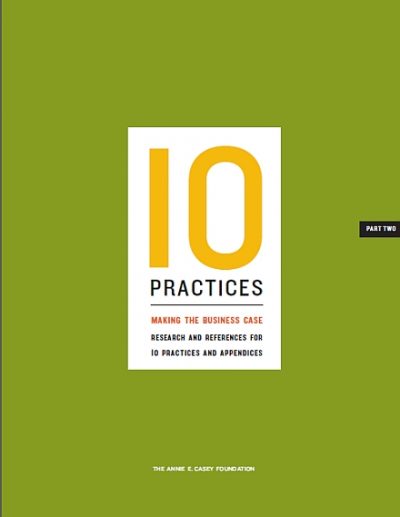Care to 21
20 states plus DC have extended care to age 21 for young people who turn 18 while in the custody of a child welfare agency.

A Child Welfare Leader’s Desk Guide to Building a HIgh-Performing Agency is designed to help busy child welfare leaders gauge their agency’s effectiveness and chart a course toward measureable improvement. Part Two of the Desk Guide includes research, references and appendices that will help leaders and their staff make the business case for improving policies and practices, with a goal of improving how children in the child welfare system fare.
Part Two includes 20 pages of references on the 10 practices of high-performing child welfare agencies. Four appendices are also included. The first describes child welfare innovations and strategies developed through Casey Foundation investments. The second lists states that have extended foster care from age 18 to 21 as of 2014. The third describes how data specialists can develop and use Entry Cohort Longitudinal Data to assess how children in their system are faring. The fourth describes how data specialists can measure racial and other disparities in children’s outcomes.
Part One of the desk guide presents targeted information on 10 practices, including 10 outcomes and 15 measures that are arguably the heart of most child welfare improvements. Leaders can use these and other measures throughout the desk guide to compare their agency results to other systems across the country.
Child welfare leaders need to do what’s right to protect children and families. But they also need to be able to communicate why certain practices and approaches are best. Casey can provide research, tools and consulting to help child welfare agencies make the business case for change.
We hope you'll find value in this report. We’d love to get a little information from you, which we'll use to notify you about relevant new resources.